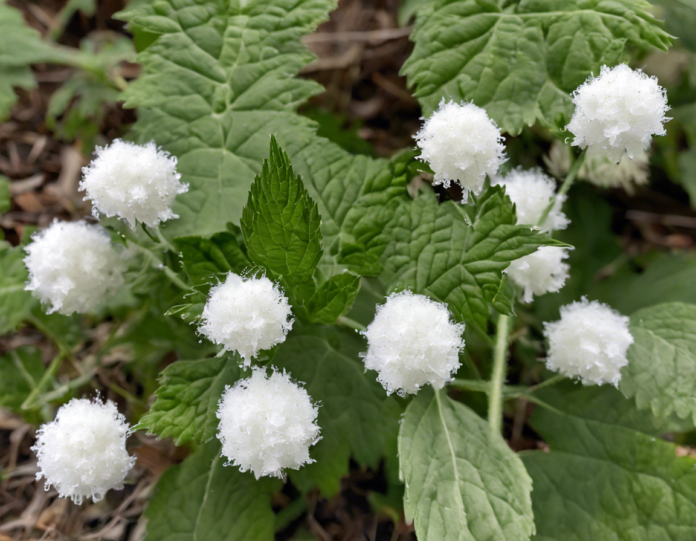Weeds are one of the most common nuisances that gardeners have to deal with. One type of weed that can be particularly invasive and problematic is the snowball weed. Also known as hairy bittercress or Cardamine hirsuta, snowball weed is a fast-spreading, annual or biennial herbaceous plant that can quickly take over your garden if left unchecked. In this article, we will delve into the world of snowball weeds, exploring their characteristics, how to identify them, the problems they can cause, and most importantly, how to effectively manage and control them in your garden.
Characteristics of Snowball Weeds
Snowball weeds are characterized by their small, round-shaped seed pods that resemble tiny snowballs, hence their name. These seed pods can explode when touched or disturbed, scattering seeds in all directions and aiding in the rapid spread of the weed. The leaves of snowball weeds are pinnate in shape, with deeply lobed leaflets, and a cluster of tiny white flowers at the top of the plant, usually appearing in spring.
Identifying Snowball Weeds in Your Garden
Identifying snowball weeds in your garden is crucial for effective management. Look out for the following key features:
- Small round seed pods: These are a tell-tale sign of snowball weeds.
- Pinnate leaves: Snowball weed leaves are distinctive with their deeply lobed leaflets.
- White flowers: Look for clusters of tiny white flowers at the top of the plant, especially in spring.
Problems Caused by Snowball Weeds
Snowball weeds can wreak havoc in your garden if left unchecked. Some of the problems caused by snowball weeds include:
- Competition for resources: Snowball weeds compete with desirable plants for water, nutrients, and sunlight, hampering their growth.
- Rapid spread: The explosive seed pods of snowball weeds allow them to spread quickly, colonizing large areas in a short amount of time.
- Aesthetic damage: The presence of snowball weeds can detract from the overall aesthetic appeal of your garden.
Managing and Controlling Snowball Weeds
To effectively manage and control snowball weeds in your garden, consider the following strategies:
1. Hand Pulling
- Wait for moist soil: Snowball weeds are easier to pull out when the soil is moist. Wait for a rainy day or water the area before hand pulling.
- Pull from the base: Grasp the weed at the base and gently pull, ensuring you remove the entire plant, including the roots.
2. Mulching
- Use organic mulch: Apply a layer of organic mulch, such as wood chips or straw, around your plants to suppress snowball weed growth.
- Monitor regularly: Keep an eye on the mulched areas and remove any snowball weeds that manage to emerge.
3. Cultural Control
- Promote healthy plants: Healthy, well-fed plants are better able to compete with weeds. Ensure proper watering, fertilizing, and overall plant care.
- Rotate crops: If you have a vegetable garden, rotate your crops to disrupt the growth cycle of snowball weeds.
4. Chemical Control
- Selective herbicides: If the infestation is severe, consider using selective herbicides specifically designed to target broadleaf weeds like snowball weeds.
- Read and follow instructions: Always read the herbicide label carefully and follow the instructions for application to avoid harming other plants.
Frequently Asked Questions (FAQs)
1. Are snowball weeds toxic?
Snowball weeds are not known to be toxic to humans or pets if ingested. However, it’s best to avoid consumption.
2. Can snowball weeds be composted?
Snowball weeds can be composted as long as the compost pile reaches high temperatures to kill any seeds. Avoid composting if the plants have gone to seed.
3. How fast do snowball weeds spread?
Snowball weeds can spread rapidly, especially with the help of their explosive seed pods. Regular monitoring and control are essential.
4. Are there any natural predators of snowball weeds?
Some insects, such as various beetles and caterpillars, feed on snowball weeds and can help in controlling their population naturally.
5. How deep do snowball weed roots go?
The roots of snowball weeds are relatively shallow, making hand pulling an effective control method if done correctly.
In conclusion, snowball weeds can pose a significant challenge to gardeners, but with proper identification and effective management strategies, you can keep them in check and maintain a healthy and thriving garden. Remember to stay vigilant, as early intervention is key in controlling snowball weeds and preventing them from taking over your outdoor space.
